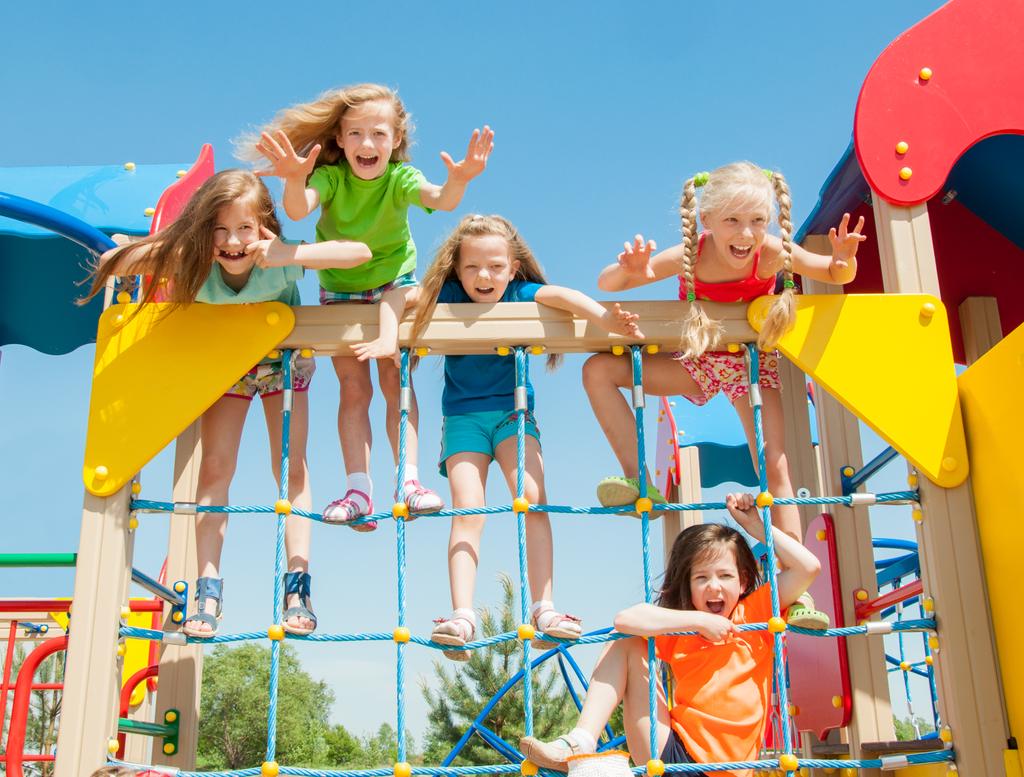Discover effective strategies for dealing with stubbornness in the playground.
How to Handle Stubbornness in the Playground
Do you ever find yourself face-to-face with a stubborn child in the playground, unsure of how to handle their resistance? Don’t worry, you’re not alone! Stubbornness is a common behavior among kids, and understanding how to address it can make playtime a more enjoyable experience for everyone involved. In this article, we will explore the nature of stubbornness, share strategies to handle it effectively, discuss ways to prevent escalation, and delve into its impact on social skills. So, let’s dive in and discover the keys to unlocking a harmonious playground!

Understanding the Nature of Stubbornness
Stubbornness can be puzzling, but it’s important to remember that it’s a natural part of a child’s development. To comprehend this behavior, let’s take a brief journey into the psychology of stubbornness.
When it comes to understanding stubbornness in children, it is crucial to delve into the intricate workings of their minds. The psychology behind stubborn behavior reveals that it often stems from a deep-rooted desire for independence. Children, in their quest to assert their autonomy, may exhibit stubbornness even in situations where cooperation is necessary.
As parents, teachers, or caregivers, it is essential to approach stubbornness with empathy and patience. By recognizing this underlying motivation for their behavior, we can navigate through their stubbornness more effectively and foster a healthy sense of independence.
The Psychology Behind Stubborn Behavior
Stubbornness in children often stems from a desire for independence. They may feel a need to assert their autonomy, even in situations where cooperation is necessary. By understanding this underlying motivation, we can approach stubbornness with empathy and patience.
Children’s stubborn behavior can be seen as a manifestation of their growing sense of self. As they develop, they begin to explore their individuality and test boundaries. Stubbornness becomes a way for them to establish their identity and assert their independence.
Moreover, children may also exhibit stubbornness as a response to external factors such as changes in their environment or routines. It can be their way of coping with unfamiliar situations or expressing their emotions when they feel overwhelmed or anxious.
Understanding the psychology behind stubborn behavior allows us to respond to it in a more constructive manner. Instead of viewing it as a negative trait, we can see it as a sign of a child’s healthy development and a desire to become more self-reliant.
How Stubbornness Manifests in Children
Stubbornness can manifest in various ways, ranging from outright defiance to repetitive refusal. Some children might dig in their heels, while others may resort to negotiation tactics. Recognizing these manifestations can help us address the behavior more effectively.
One common manifestation of stubbornness is when a child outright refuses to comply with requests or instructions. They may become resistant and unyielding, making it challenging for adults to persuade them to cooperate. This form of stubbornness often arises when children feel a need to exert control over their own actions and decisions.
Another way stubbornness can manifest is through repetitive refusal. Children may repeatedly decline to engage in certain activities or tasks, even if they have done them before without any issues. This type of stubbornness can be frustrating for adults, as it may seem irrational or illogical. However, it is important to remember that children may have their own valid reasons for their refusal, which may not be immediately apparent to us.
In some cases, children may resort to negotiation tactics when faced with a situation where they feel stubbornness is necessary. They may try to bargain, make deals, or propose alternative solutions in an attempt to assert their independence while still achieving their desired outcome. Recognizing these negotiation tactics can help adults find common ground with the child and reach a compromise that satisfies both parties.
Understanding the various ways in which stubbornness can manifest in children allows us to approach their behavior with a more nuanced perspective. By acknowledging their need for autonomy and finding ways to work together, we can help children navigate their stubbornness while fostering a positive and cooperative environment.
Identifying Stubbornness in the Playground
Now that we understand the nature of stubbornness, let’s explore how to identify it amidst the hustle and bustle of the playground.
The playground, with its vibrant colors and joyful laughter, is a place where children come together to play, learn, and grow. It is a microcosm of society, where various personalities and traits are on full display. Among these traits, stubbornness can sometimes rear its head, causing challenges for both children and adults alike.
Stubbornness, characterized by a refusal to change one’s mind or behavior, can manifest in different ways. By being aware of the signs, we can better understand and address this behavior.
Signs of Stubborn Behavior
Watch out for signs such as crossed arms, a determined pout, or consistent resistance to redirection. These cues can provide valuable insights into the presence of stubbornness.
Imagine a scenario on the playground where a group of children is playing a game. One child, let’s call him Alex, insists on playing by his own rules, refusing to adapt to the agreed-upon rules of the game. With crossed arms and a defiant pout, Alex demonstrates classic signs of stubbornness.
Another example could be a child who consistently resists redirection from a teacher or caregiver. No matter how gently or firmly they try to guide the child towards a different activity, the child remains steadfast in their refusal, displaying a clear stubborn streak.
Differentiating Between Stubbornness and Assertiveness
While stubbornness may seem similar to assertiveness, it’s crucial to distinguish between the two. Assertiveness involves expressing one’s opinions or needs confidently, without disregarding the wants and needs of others. By recognizing this difference, we can respond appropriately to each behavior.
Assertiveness, unlike stubbornness, is a valuable skill that allows individuals to communicate effectively and advocate for themselves. It is important for children to learn how to express their thoughts and needs assertively, while also considering the perspectives of others.
On the playground, we may come across a child who confidently expresses their desires and opinions without disregarding the wants and needs of their playmates. This child demonstrates assertiveness rather than stubbornness, as they are able to navigate social interactions while still standing up for themselves.
By understanding the distinction between stubbornness and assertiveness, we can help children develop the necessary skills to communicate effectively and navigate social situations with confidence.
Effective Strategies to Handle Stubbornness
Now that we’ve identified stubbornness, let’s explore some practical strategies to help us navigate this challenging terrain.
Stubbornness can be a common characteristic among children, often presenting itself as a roadblock to effective communication and cooperation. However, with the right techniques and mindset, parents and caregivers can successfully manage and guide their stubborn children towards positive growth and development.
Communication Techniques for Stubborn Children
Effective communication is key when dealing with stubborn children. Encourage open dialogues, active listening, and the expression of emotions. By establishing clear and respectful lines of communication, we can foster understanding and cooperation.
One technique that can be particularly helpful is active listening. This involves giving your child your full attention, maintaining eye contact, and truly understanding their perspective. By actively listening, you show your child that their thoughts and feelings are valued, which can help them feel more inclined to cooperate.
Another important aspect of communication is the expression of emotions. Encourage your child to express their feelings openly and honestly. This can be done through conversations, but also through creative outlets such as drawing or journaling. By allowing your child to express their emotions, you create a safe space for them to process their thoughts and feelings, which can ultimately lead to better cooperation.
The Role of Patience and Consistency
Handling stubbornness requires a healthy dose of patience and consistency. Remember, change takes time. Stick to your approach while providing gentle reminders and reinforcing positive behavior. Consistency helps children understand and adapt to expectations, leading to positive progress.
Patience is a virtue that is especially important when dealing with stubbornness. It’s crucial to remember that change doesn’t happen overnight. It may take time for your child to fully understand and embrace new behaviors or perspectives. By maintaining patience, you create an environment that is conducive to growth and learning.
Consistency is another vital component in managing stubbornness. Children thrive in environments where expectations are clear and consistent. By setting clear boundaries and consistently reinforcing positive behavior, you provide your child with a sense of structure and stability. This, in turn, can help them understand what is expected of them and make it easier for them to adapt and cooperate.
It’s important to note that while consistency is key, it’s also important to be flexible and adaptable. Each child is unique, and what works for one may not work for another. As a parent or caregiver, it’s essential to observe and understand your child’s individual needs and adjust your approach accordingly.
In conclusion, handling stubbornness in children requires effective communication techniques, patience, and consistency. By fostering open dialogues, active listening, and the expression of emotions, parents and caregivers can create an environment that promotes understanding and cooperation. Additionally, practicing patience and maintaining consistency in expectations and reinforcement can help children adapt and grow positively. Remember, managing stubbornness is a journey that requires time, effort, and understanding, but with the right strategies, it is possible to navigate this challenging terrain successfully.
Preventing Stubbornness from Escalating
Prevention is better than cure, they say, and the same holds true for tackling stubbornness in the playground. Let’s explore some preemptive measures to ward off potential stubbornness meltdowns.
Setting Boundaries and Expectations
Clearly defining boundaries and expectations can help prevent potential clashes. Setting limits on behavior while explaining the rationale behind them cultivates a sense of structure, aiding in reducing stubbornness.
Encouraging Cooperative Play
Promote cooperative play by fostering teamwork and collaboration. Engage children in activities that require shared decision-making and emphasize the enjoyment of accomplishing goals as a group. Encouraging this mindset helps create an environment where stubbornness can take a backseat.
The Impact of Stubbornness on Social Skills
Stubbornness doesn’t exist in isolation; it can have a profound impact on a child’s social skills. Let’s examine how it can affect both their interpersonal relationships and overall development.

How Stubbornness Affects Peer Relationships
Stubbornness can strain peer relationships, as it may lead to conflicts or isolating behaviors. By addressing stubbornness early on and providing children with the tools to navigate social situations, we can nurture healthier interactions and bolster their friendships.
Stubbornness and the Development of Social Skills
While stubbornness can present challenges, it also presents an opportunity for growth. By helping children recognize the importance of compromise, negotiation, and flexibility, we can assist in the development of vital social skills. These skills will serve them well beyond the boundaries of the playground.
A Peaceful Playground is Within Reach
Handling stubbornness in the playground doesn’t have to be a daunting task. By understanding its nature, identifying it, employing effective strategies, and preventing escalation, we can help children build better social skills and create a more harmonious play environment. By fostering open communication, patience, and consistency, we unlock the door to growth and cooperation. So, embrace the challenge with a playful mindset, and watch as the playground transforms into a haven of shared laughter and joyful memories!



